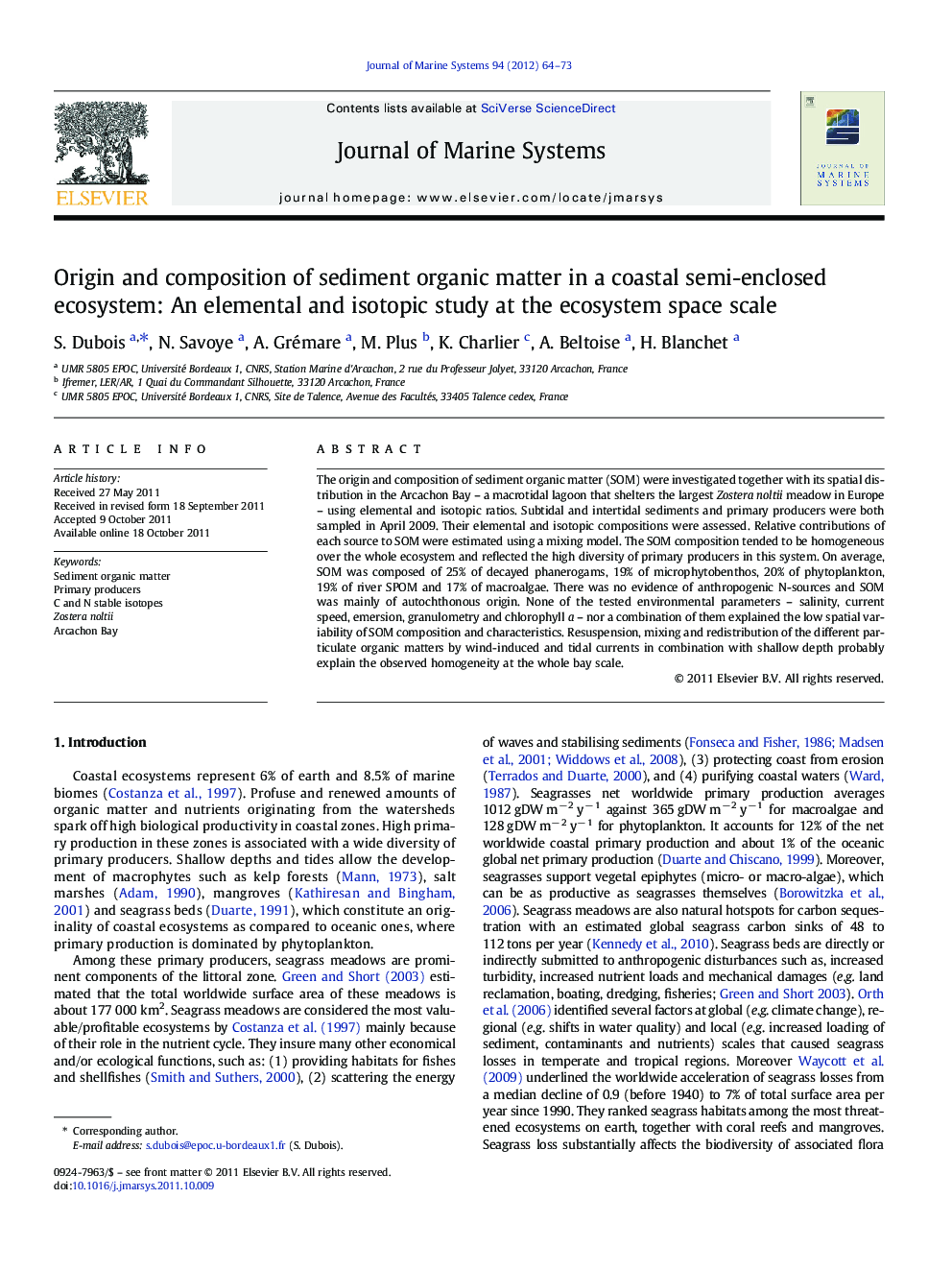| Article ID | Journal | Published Year | Pages | File Type |
|---|---|---|---|---|
| 4548246 | Journal of Marine Systems | 2012 | 10 Pages |
The origin and composition of sediment organic matter (SOM) were investigated together with its spatial distribution in the Arcachon Bay – a macrotidal lagoon that shelters the largest Zostera noltii meadow in Europe – using elemental and isotopic ratios. Subtidal and intertidal sediments and primary producers were both sampled in April 2009. Their elemental and isotopic compositions were assessed. Relative contributions of each source to SOM were estimated using a mixing model. The SOM composition tended to be homogeneous over the whole ecosystem and reflected the high diversity of primary producers in this system. On average, SOM was composed of 25% of decayed phanerogams, 19% of microphytobenthos, 20% of phytoplankton, 19% of river SPOM and 17% of macroalgae. There was no evidence of anthropogenic N-sources and SOM was mainly of autochthonous origin. None of the tested environmental parameters – salinity, current speed, emersion, granulometry and chlorophyll a – nor a combination of them explained the low spatial variability of SOM composition and characteristics. Resuspension, mixing and redistribution of the different particulate organic matters by wind-induced and tidal currents in combination with shallow depth probably explain the observed homogeneity at the whole bay scale.
Research highlights► SOM composition reflected the diversity of primary producers and POM sources of the system. ► SOM is mainly of autochthonous origin. ► There is no influence of anthropogenic N-sources in Arcachon Bay. ► SOM composition is homogeneous at the bay scale. ► None of the tested environmental forcings explained the spatial variability of SOM composition and characteristics.
